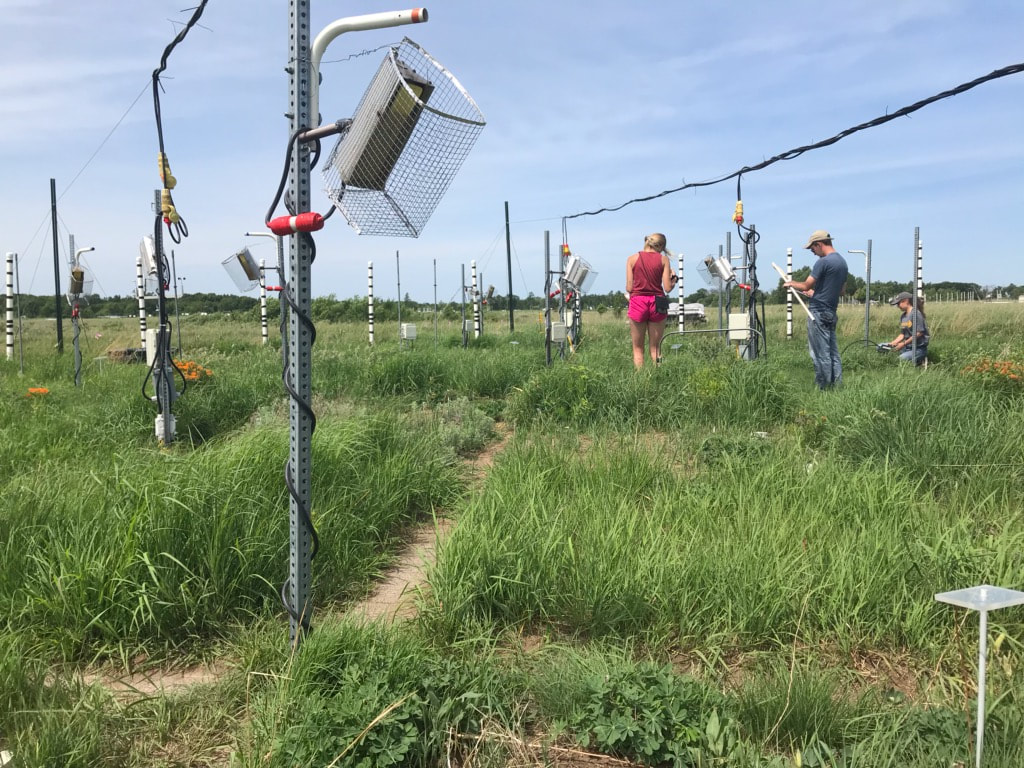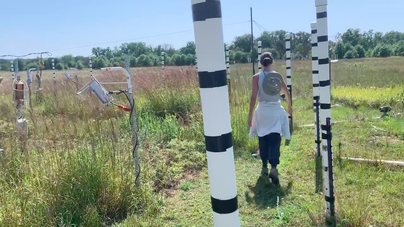How will global changes affect carbon cycling, from the leaf to the ecosystem?
|
Rising atmospheric CO2 may boost plant photosynthesis, a process by which plants take up CO2 and convert it into sugars. Thus, plants absorb a portion of the CO2 building up in the atmosphere and slow climate change. However, there may be a limit to this buffering effect, as the ability of plants to soak up this extra CO2 may depend on the varied physiological characteristics inherent to different groups of plants, the availability of other plant resources like nitrogen in the soil, and other environmental changes like lower rainfall and climbing temperatures. Moreover, enhanced photosynthesis and growth may not translate into long-term ecosystem carbon storage. The objectives of this project were to (1) determine how different groups of plants vary in the response of photosynthesis to elevated CO2 over decades, (2) explore whether soil nitrogen supply and climate change influence leaf-level responses to elevated CO2, and (3) determine the relative influence of elevated CO2, increased nitrogen supply, and biodiversity on ecosystem carbon and nitrogen storage.
This work took place within BioCON, a long-term Free-Air CO2 Enrichment (FACE) experiment in a perennial Minnesota grassland. The plant species in the experiment belong to four plant 'functional groups' (collections of plant species grouped based on shared sets of functional attributes), including C3 grasses, C4 grasses, nitrogen-fixing legumes, and non-leguminous forbs. Plots were planted with 1, 4, 9, or 16 species and have been exposed to elevated CO2 and nitrogen addition in factorial combinations since 1998. I also used a sub-experiment within BioCON that manipulates air/soil temperature and rainfall to examine effects of climate change on photosynthesis and potential interactions with elevated CO2 and nitrogen. While a surge in plant CO2 capture via photosynthesis could slow the current upward march in atmospheric CO2, my work indicates that the capacity of plants to buffer CO2 rise is limited. I found that elevated CO2 enhanced photosynthesis by only 13% in C3 plants, which is substantially lower than the average ~30% reported in the literature. This discrepancy is important because this study included more species, measured over a much longer duration, than other previous studies of this type. Moreover, when photosynthesis was measured in species mixtures exposed to all combinations of CO2 x nitrogen x rainfall x temperature, complex interactions among treatments, environmental conditions, and species identity emerged. After ~2 decades of CO2 enrichment, increased photosynthesis and plant productivity under elevated CO2 have not led to greater soil carbon storage because of concurrent enhancements in soil carbon losses via soil respiration. Thus, in this nutrient-poor grassland system, the enhanced ability of plants to sequester carbon under elevated CO2 may not translate into long-term (i.e., decades or more) carbon storage. Our results also suggest that biodiversity losses may influence carbon storage as more or more than rising CO2 or high nitrogen deposition rates. |
|



